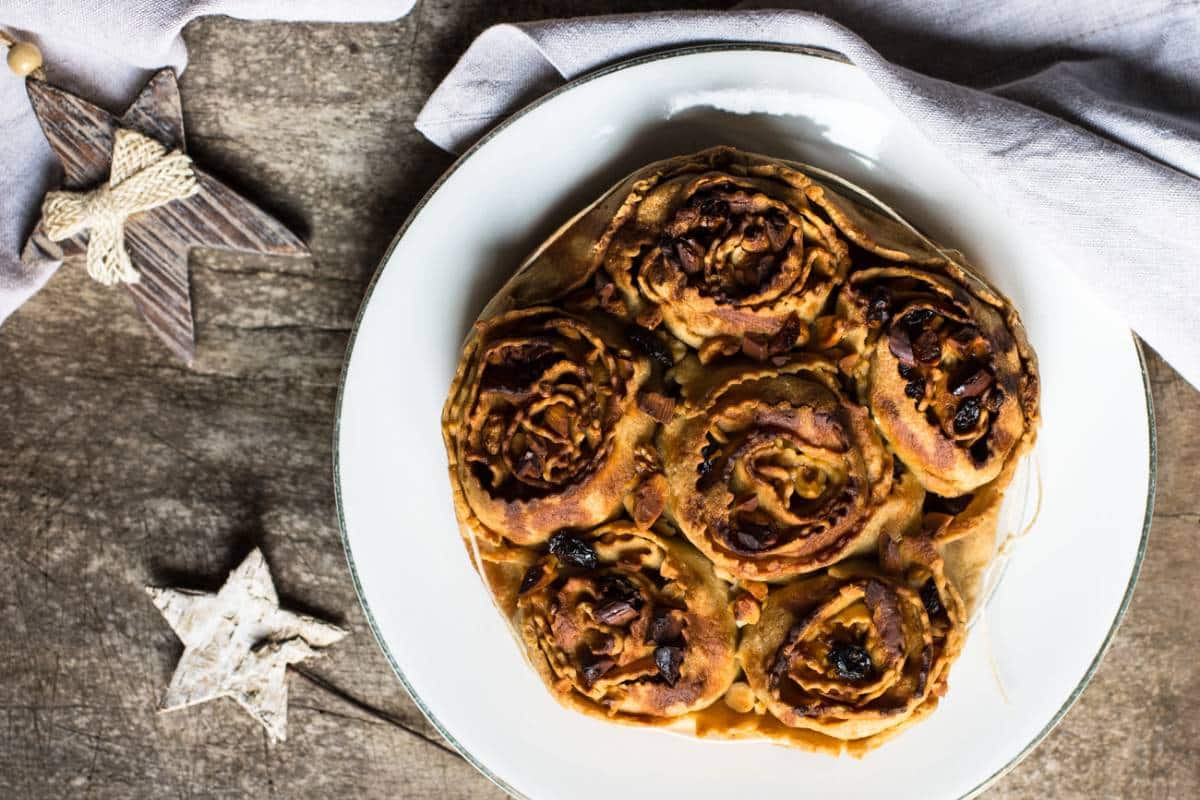There is no town or village in Italy that does not boast its own typicality or typical dish, and it is precisely this that makes Italy’s gastronomic heritage varied and inimitable. At Christmas, sweets take center stage, and among them we cannot fail to mention Pitta ‘mpigliata. Although it is spread all over the Calabrian territory in different forms or with different ingredients, this rose-shaped sweet is typical of San Giovanni in Fiore, a village in the province of Cosenza: right here, in the heart of the “Sila National Park,” in 2009 the largest Pitta ‘mpigliata in the world was prepared, a good 130 meters long.
Pitta ‘mpigliata, from wedding gift to offering to the gods
The origins of Pitta ‘mpigliata blend history and legend: in fact, the name pitta refers back to the Greek picta meaning decorated, painted. In fact, it is said that in Magna Graecia it was customary to offer this sweet to the gods during pagan celebrations: the legend tells of the young warrior Diodorus who, guilty of not reciprocating Athena’s advances, was locked up by her in a labyrinth. Only his beloved Diomira, turned into a snail by Aphrodite, managed to free him with the complicity of a seashell that protected the two lovers until they exited the labyrinth. Apparently, it was Diodorus and Diomira who invented the pitta to thank the goddess Aphrodite for her invaluable help.
With the advent of Christianity and the birth of the first churches, Pitta ‘mpigliata began to be offered in honor of the Virgin Mary, so much so that it is also called Pitta della Madonna in Calabria.
From a historical point of view, the first document that mentions Pitta ‘mpigliata is a kind of premarital contract made in 1728 between two future spouses, where the groom’s family is asked to prepare a Pitta ‘mpigliata well in advance. This confirms that in the 1700s in Calabria, Pitta ‘mpigliata was a traditional wedding dish: it then had to be prepared at least 2 days in advance to allow the many ingredients to blend together.
How to make pitta ‘mpigliata
Pitta ‘mpigliata, for which an application has been made in order to obtain the “Protected Designation of Origin,” requires many ingredients for its preparation, but the result is really tasty.
For the dough
500 g flour
100 gr sugar
100 ml vermouth
100 ml evo olive oil
1 tablespoon of grappa della Sila
1 tablespoon anise liqueur
1/2 tablespoon ground cloves
1/2 tablespoon cinnamon
50 ml orange juice
1 sachet of baking powder
25 g orange honey
salt
First you need to heat all the liquids in a saucepan with the sugar and salt, adding each one slowly. After letting everything cool, it is time to knead it with the sifted flour until a smooth dough is obtained, which should then be divided into two parts to be left to rise in a warm place for at least 1 hour.
Roll out both loaves fairly thinly into disks of dough, one of which should be divided into many rectangles, being careful to raise the edges of the rectangles: this will make little boats to be filled with the filling.
For the filling
200 g chopped toasted almonds
200 g shelled chopped walnuts
250 g of orange honey
50 g chopped pine nuts
100 g chopped raisins
100 g chopped dried figs
1 teaspoon cinnamon
1 tablespoon sugar
anise liqueur to taste
grated zest
After mixing all the ingredients for the filling, fill the previously prepared dough boats and then roll them up, forming many small rosettes.
On a baking sheet covered with baking paper, place the whole disc of dough with the stuffed dough rosettes on top, arranged concentrically. After lifting the edges of the bottom disk, creating a kind of container and sprinkling with sugar, bake for 30-40 minutes at 180°.
It is recommended that Pitta ‘mpigliata be eaten after a couple of days because, being a dry Christmas treat, it needs time for all the flavors it contains to be released in the mouth.
Ph. peperoniepatate.com



0 Comment